How an Army of 700 Brought Back the ‘Eco-Challenge’ for Amazon

SPOILER ALERT: Do not read if you have not yet watched “World’s Toughest Race: Eco-Challenge Fiji,” streaming now on Amazon.
The 11 day, 416-mile “world’s toughest race” is back. After an 18-year hiatus realty tv mastermind Mark Burnett resurrected the “Eco-Challenge” for new audiences on Amazon Prime Video. Set in Fiji, this epic quest invited 66 teams from across the globe to compete against each other and the elements through oceans, rivers, jungles and up mountainsides.
Here, executive producer Lisa Hennessy, an “Eco-Challenge” veteran, talks with Variety about how 700 people worked together to film this new reality show, including mixing tales of physical challenges with those whose real battles were with their own self-determination.
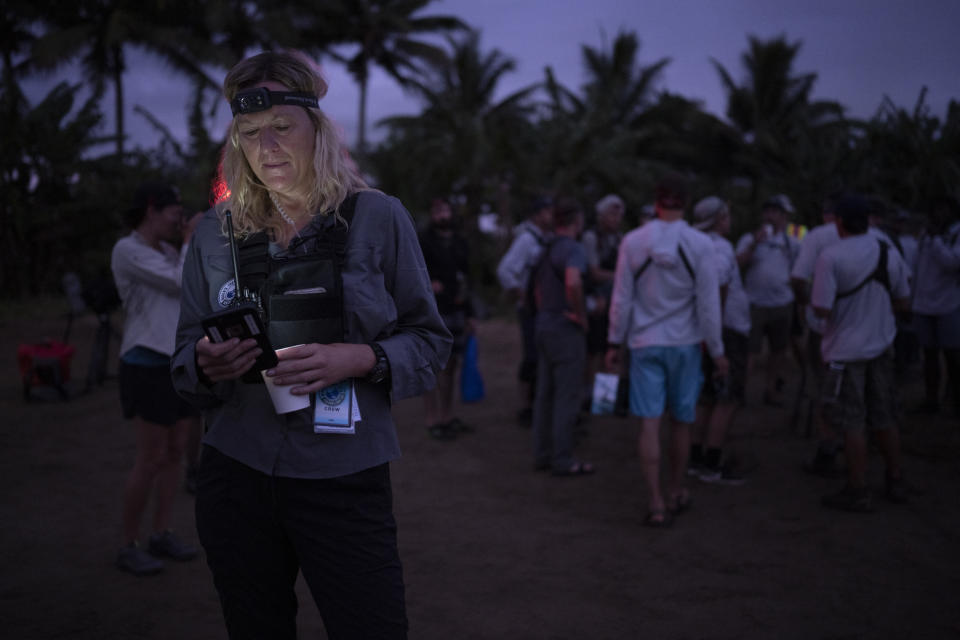
When did you discover adventure racing?
I started working on “Eco-Challenge” in 1994. On April 25th, 1995, Mark Burnett said, “Go,” in the deserts of southern Utah, and that’s when it all began. I’ve been fortunate enough to work on every single event from 1995 to 2002. And then I was really excited to be part of the core team to bring the challenge back to the world as the world’s toughest race.
There are so many survivalist TV shows out there. What makes “Eco-Challenge” different?
It’s a team sport. There’s a lot of pressure when you’re racing as a team. You get strength in racing as a team, but if you are a weak member at any given day, there’s a lot of mental pressure in that. It’s tough to be able to compete 24 hours a day. A lot of the toughness is sleep deprivation. And then you’re also competing against mother nature. You have to carry on with the team, because if one member quits the entire team is done.
How does one qualify to run the challenge?
There’s something called competitive registration: 1,000 teams apply and then we look at their story and their team bio, and then we narrow the playing field down. But in Fiji in particular, we narrowed the playing field down to 66. We wanted to have people from a lot of different backgrounds — it’s obviously a global event [and] Amazon is a global platform. We had people that represented race, gender, certain flags.
Once they get in, the teams have to get certificates of training. You need to make sure that they’re proficient in climbing, that they took a navigation test, [that] one of the members of the team has their first aid certified. There’s a great deal of precaution. They have to be people that can adhere to doing the toughest race.
How many people do you have working during the actual production?
There’s 700 people total that make up the army that sits on production. We have a race staff that are certified mountain guides, certified safety water rescue people. So it’s a massive, massive team. Our race course coordinating team is Kevin Hodder and Scott Flavelle, who are Canadian mountain guides. It’s an army of specialists that put on the race section and the safety section. And then we have a team of 25 doctors. Dr. Joe Rowles is the medical [advisor]. They’re all trained in adventure safety rescue for teams, and know how to do winch rescues from the helicopter.
Then we have a TV crew of 200, which are the camera operators, audio operators, EPs and the producers that pull off the TV portion of it and cover the story of these amazing teams. We have 70 volunteers that come from 27 countries around the world and 200 local Fijians that work for us. And then there’s the helicopter pilots as well.
Who do you have to have in place to make sure all of the participants are safe?
We had this massive medical team in case the athletes have a problem. One of the major things that we were able to do in 2019 that we weren’t able to do the past, is that each team and each camera crew and every safety boat has a tracking device on it. So in Race HQ, we’ve got all these massive screens; it’s almost like a futuristic movie.
We can see with little dots where the teams are, from a safety perspective we’re tracking them in the wilderness, all the time, and then we’re also tracking our crew. Then we also have a fleet of five helicopters that are flying around, moving teams around, Bear [Grylls, the host, is] moving around, that we know from an aerial perspective where people are as well and can check in on them. Bear would drop in and check on teams periodically. So would Hodder, the race cirector.
Then there [are] 32 checkpoints and four camps along the way and that’s where the assistant crew is. The assistant crew is the person that really takes care of the team emotionally, mentally when they get to the camp to make sure that they’re okay. And there’s also a medical tech there as well.
We want to make sure that everyone, including our crew, is taken care of really safely, because it’s a really, really tough undertaking — [a] massive undertaking.
Are there mandatory rest times for each team at check points?
There’s [a] 90-minute stop down at each of the four camps [where the teams] see their assistant crew member, maybe stop in the medical center, get something to eat. It’s also an opportunity for us to do interviews.
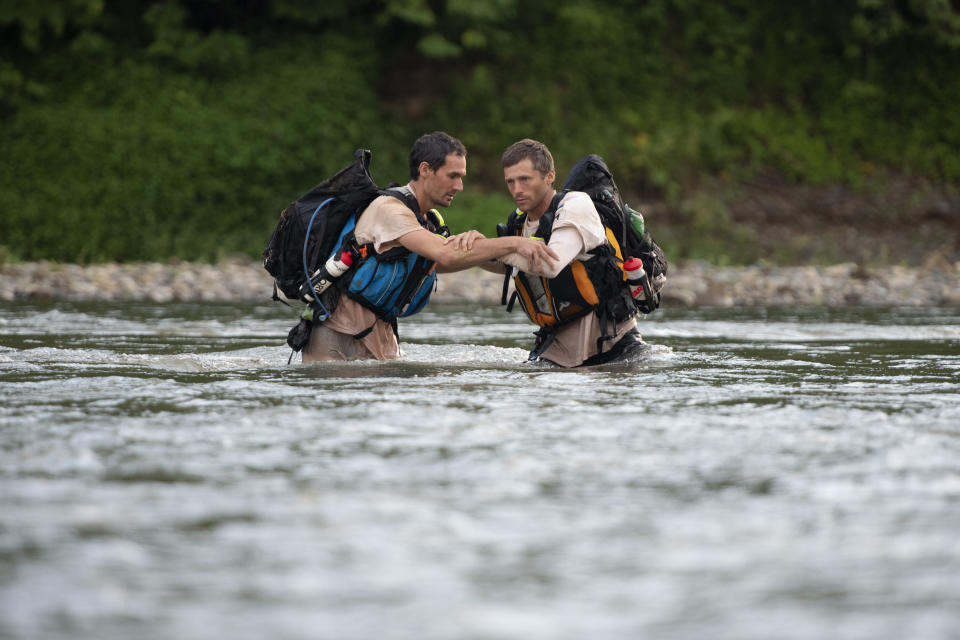
What happened when you shut down the race due to the tropical storm? Did you stagger the teams’ release times the next day?
They were all released at once. You’ve got to remember is it’s an expedition. The people that came in earlier and had to do the stop down, they were able to rest longer than the other teams that came in later. Mother nature is the one who really rules everything. Everyone understands that.
From a safety perspective we can’t have people going into a canyon when it’s flooding. Team Estonia had already been in there, but the other teams, we couldn’t let them in, it was just too unsafe. The entire course was stopped down. When we felt it was safe enough from a weather perspective, we said, “OK, the race is back on again.” So it was almost like a game of freeze, really.
When you finally got back the footage from the Estonians the night in the canyon, what did you think? Were you terrified for your camera crew?
I knew it was happening live. We knew we’re in the Tropics. My race expert team, we had a backup plan for if that happened. We had our Kiwi helicopter pilot fly over there just so you could have the radio coverage, direct line of sight. Our cameraman Pablo Durana, who’s a total bad ass; he’s one of the embedded camera crews. [We were] talking down to Pablo and the team saying, “Are you guys OK?” And they were like, “Yeah, we’re hunkering down for the night.”
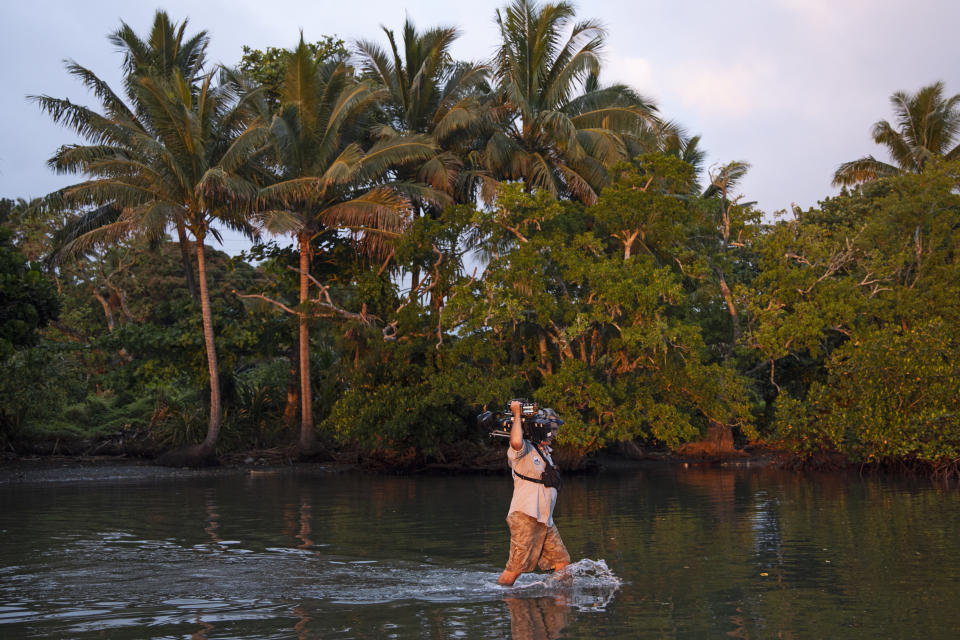
The footage, I mean, it’s amazing what Pablo was able to shoot in that environment. The racers train to do hard things, but Pablo’s doing the hard thing and answering a camera and telling the story. It’s really extraordinary, extraordinary footage. Good on Pablo and good on Team Estonia for getting out of the canyon.
There’s 13 embedded camera crews and we call them special ops. They ran the race, and then they did it again. If a team of theirs finished or was disqualified, they went out and covered another team. These guys and women are just really extraordinary athletes and storytellers and great people, we’re so proud that they were the special ops, really telling the intimate stories of these incredible athletes.
When the racers stop at the Fijian villages for food or to rest, is that something that the race is paying for, or do the competitors pay for this? Or is this just an act of kindness?
When they stop off in a Fijian village we really have nothing to do with that. The Fijian people are the kindest people on the planet; my guess is that they’re just letting them into their homes and taking care of them and making sure they’re OK, because they’re just the nicest people. Really, truly it was a section of the race where the teams could get assistance. They would pay them to get a horse or a guide. That’s like with any classic expedition, working with the local people to help you figure out a route.
We really wanted to have that interaction with the Fijian people, because we had done so much work there and so much scouting, and they’re just such an important fabric of the route and what we’re doing, and they were so kind to let us go through all their villages.
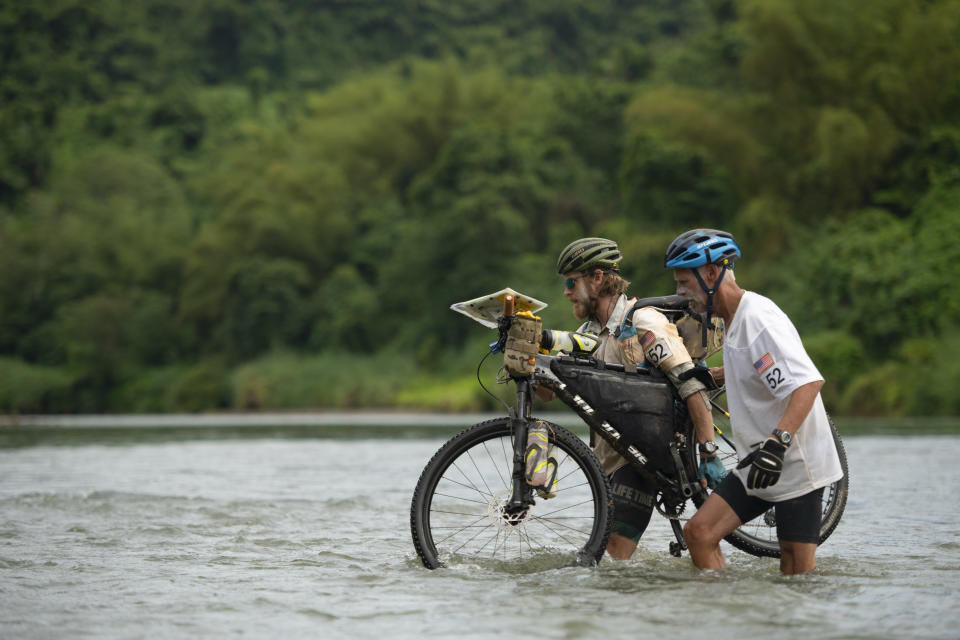
Out of all the people that you followed, which group surprised you the most?
I don’t know if it’s as much the word “surprise” as it is just touched my heart, is Team Endure, and Mark and Travis Macy. I’ve known Mark Macy [for] 25 years. He’s raced in every race that we’ve produced. He is an extraordinary human. And when he called me and said, “Lise, I have early onset Alzheimer’s, but I really would like to race in the comeback feature of Eco-Challenge.” I said, “Yes, sir. We want to have you back.” And to see that — I’m tearing up — to see that story unfold and to see how strong they were, and to see how hard it was for him, but yet his team pulled around him. That to me is beautiful and extraordinary
At the closing ceremony we gave them the Spirit of Eco-Challenge Award because they are the spirit of what this show is all about. It’s about teamwork. It’s about grit. It’s about family. It’s about perseverance. It’s about all these important things that are so important in terms of lessons right now.
What has the Macy family reaction been to the series?
Incredible. They have a really tight community, they have a tight family. Travis is just such a great son and role model for his community and for this production. I think it’s really emotional, and he’ll always have that. The biggest thing for Mark was that he wanted his grandchildren to see who he really is, and so now they’ll always have that and their grandchildren will be able to watch this and just be inspired by how strong their grandfather was. It was really truly an emotional thing for that family — and well-deserved — because Mark Macy is really part of the DNA of what “Eco-Challenge” has always been.
How about Team Bend? They had an amazing journey. What lessons do you think we learned from this team?
So they were so excited to be in first place, honestly, the first day. They’re a very competitive team. They’re a very tight-knit team and, as they say, they ran their engine too hot. It’s really hot out there — it’s hard to describe like how hot. When they got into that island to do the track, we couldn’t get enough water. People were just so hot from paddling that far in the hot sun. To see them, it’s heart wrenching. When you’re a competitive team and you’re in first place. Poor Dan.
Poor Dan.
It gets so demoralizing for him that he’s the one balking, your body just doesn’t let you go on. Then you’re just sitting there watching teams pass you. You’ve been in first place, and then all of a sudden, team after team is passing you and you drop down.
But you don’t give up. That’s what an expedition is and that’s what makes this special. You had a really bad afternoon, and now you pick yourself up and you move on and you finish, because you have 10 more days to go to finish this amazing expedition to stopwatch. They just had such a good attitude about it and stuck together as a team, and we were able to really showcase them when they had navigational error along the way. They really had some challenges along the way and you saw them figure it out, adapt, and then eventually cross the finish line.
As someone who’s felt like, I’m sure, Dan did, I was actually really, really glad when they had navigational errors. You don’t feel solely responsible: someone else needed to make a mistake so then we all know how hard this is.
Yeah, exactly. Then you realize that at any given hour someone on your team is going to be strong and someone’s going to be weak, and all of you are going to be tested. The race is designed to really test and break you, and then you just see how strong you are. At one point you need to be the leader being like, “You got this.” And then sometimes you’re the weak one being like, “I don’t know if I can go on,” and you need someone else to say, “You got this.” So, I mean, that’s really what the beauty of it is on like a fundamental level.
We saw that with Team Iron Cowboy as well. You could see kind of the evolution of Sonja, and how she broke on day one, and then she was like, “I’m going to get stronger again. Now I’m going to be the strong one.” It was really nice that you could sort of see the evolution of these teams as they hit their lowest lows and go to their highest highs along this 10-episode series and 10-day expedition.
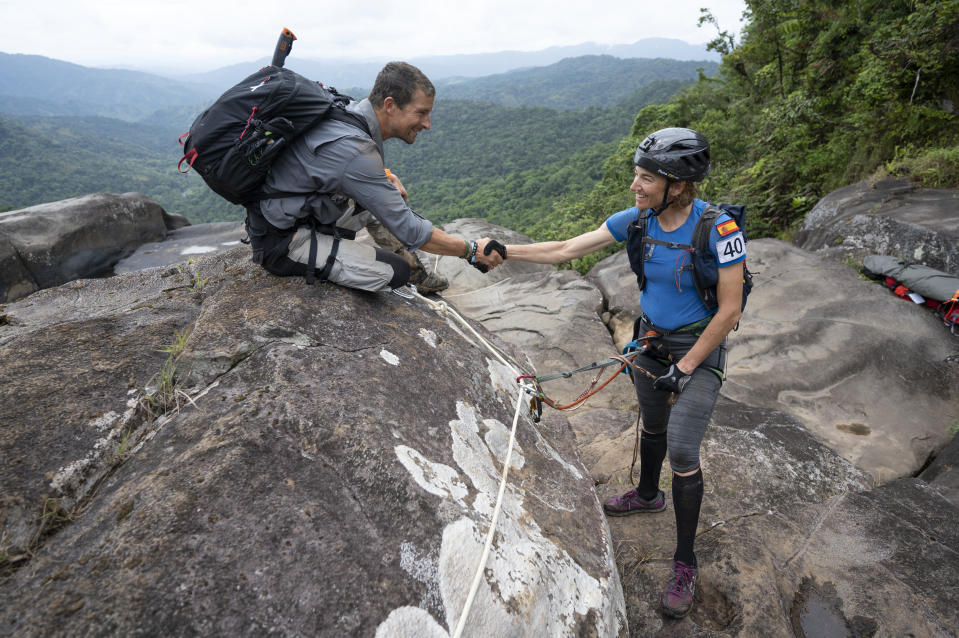
Were you surprised that Team Summit got back out on the trail after the bout with hypothermia?
No. Not at all. They are one tough team. That was a really scary night for us. Hyperthermia is scary. It’s really scary. That’s why we had the medical tent there, and the warming tent, because we knew the teams would be cold, especially when they were tired and at night. You could kind of almost see it on her face, where she was just like, “All right, we’ve got to get going.” It’s hard when you have that mentality to keep going, not to keep going. But it was up to the team to make that decision. We had the medical team there to support them. I’m not surprised at all. Emma and that team, they’re tough as nails.
So you think Emma will ever run another adventure race?
I would not be surprised. What I really love is all the phenomenal female strong people represented in the show, because as a strong female myself that’s very important to me, to have proper representation for women and to show how strong they are. I don’t know, I can’t speak for Emma, but I would not be surprised if she did it again. I think she even has a quote in the show where she’s just like, “Why are we doing this? Because we love it!”
She says that a lot. That’s why I liked her, “Why do people do this? Why am I doing this?” Every time, “Why am I doing this?”
It’s like, why not?
Lots of people are turning to survivalists series like “Eco-Challenge,” “Alone” and “Survivor” right now. Why do you think we’re clinging to these survivalist shows right now?
I think we’re reminded how strong humans really are. We’re all dealing with great uncertainty, and true adventure is not afraid of uncertainty. You are stronger than you think. And I think that one of the big lessons is teamwork. You know, we’re stronger when we work together, and that fundamentally is what “Eco-Challenge” is. When you work together you can overcome great obstacles. I think that that’s the great message now, when people are struggling with so much uncertainty. People are dealing with so many hardships that it’s great to see people that are tested and that they can overcome it.
Launch Gallery: World’s Toughest Race: Eco-Challenge Fiji: Photos
Best of Variety
Sign up for Variety’s Newsletter. For the latest news, follow us on Facebook, Twitter, and Instagram.

